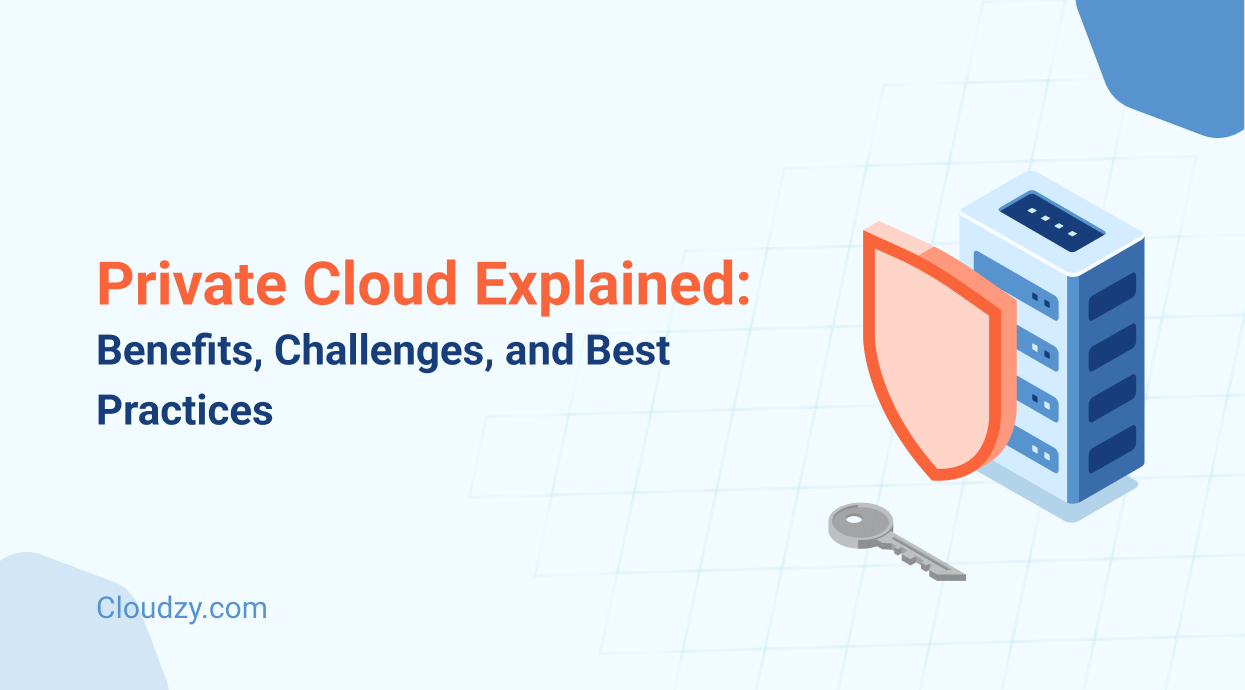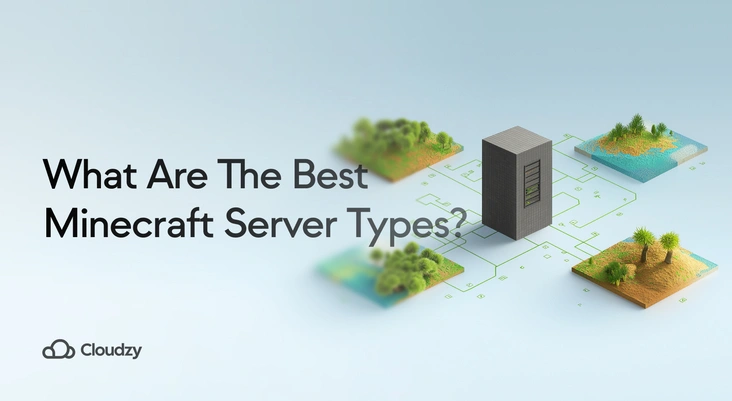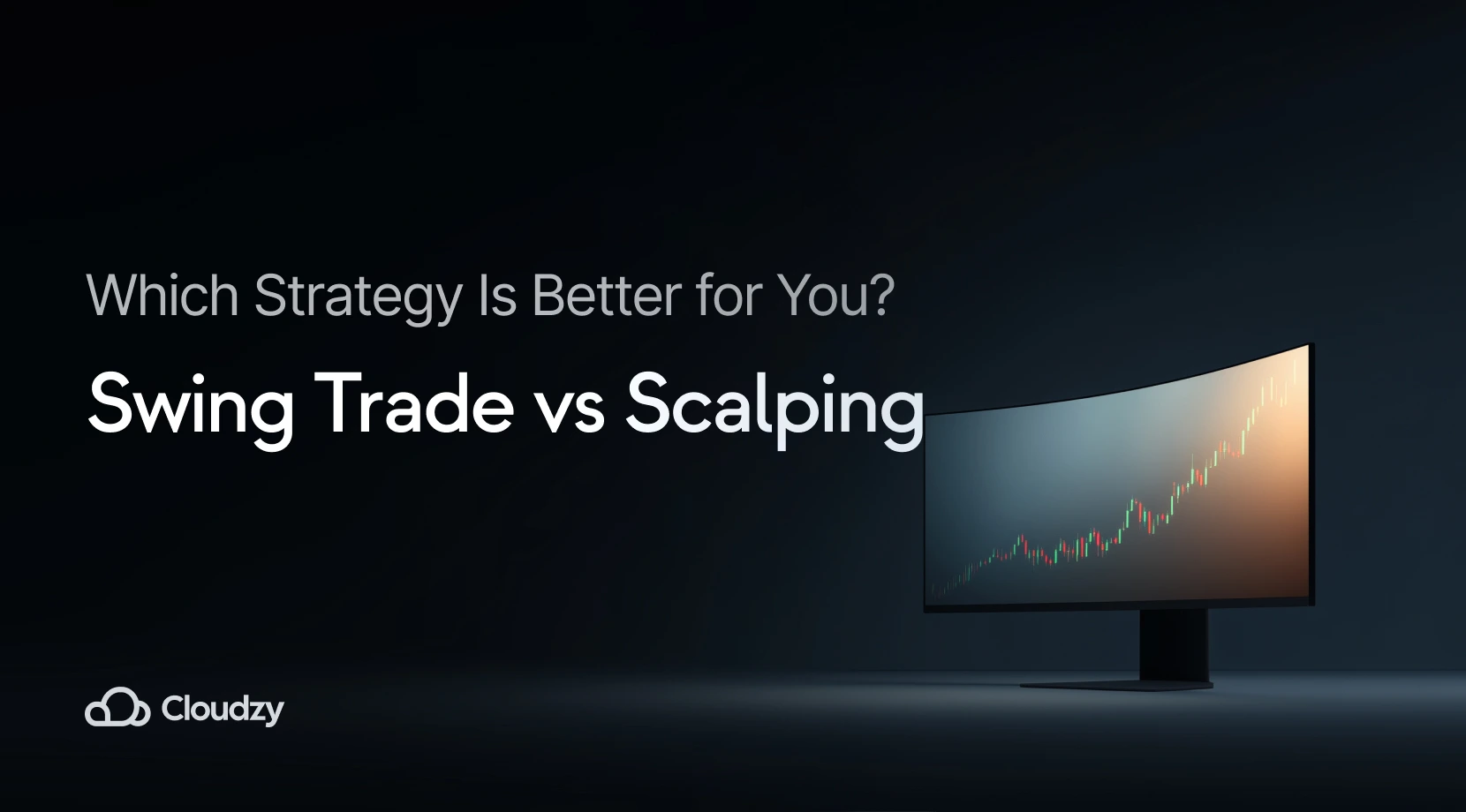It’s hardly surprising that more enterprises are looking for the topic of private cloud explained and setups based on that, keeping sensitive data in-house while still tapping into on-demand servers, which feels like having the best of both worlds. You maintain tight security controls and performance consistency, yet can spin up new instances without the delays of physical provisioning.
At the same time, public clouds can feel too uncontrolled for mission-critical workloads, so understanding a private model is a must before making any infrastructure bets. For startups and SMEs looking for cloud computing solutions for small businesses, a private cloud can be the right balance between cost control and infrastructure autonomy.
What Is a Private Cloud? A Closer Look at Dedicated Infrastructure
To have a private cloud be explained well, think of it as your own slice of the cloud: all compute, storage, and networking reserved for your organization alone. Rather than sharing resources with unknown tenants, you carve out virtual machines or containers on hardware that’s either on-site or publicly hosted, but logically isolated.
Before diving into specifics, here are the core components at play:
- Virtualization layer that abstracts physical servers into flexible VMs or containers
- Self-service interface enabling developers to launch and manage instances without ticketing queues
- Automation tools (think IaC scripts and CI/CD pipelines) that keep deployments predictable
- Security policies tailored to your compliance standards, from encryption keys to firewall rules
- Monitoring and logging integrated across all tiers for real-time visibility
By centralizing these elements under one roof, a private cloud gives you the flexibility of public platforms, minus unknown neighbors and surprise performance dips.
Behind the Scenes: How a Private Cloud Operates
At its heart, a private cloud can be explained as cloud that relies on three layers. First, the hardware: racks of servers, switching fabric, and storage arrays. Next, the virtualization or container engine distributes those physical bits into logical units you can consume. Finally, orchestration software ties it all together, automating scaling, failover, and maintenance tasks.
Here’s a quick breakdown:
| Layer | Role | Key Benefit |
| Hardware | Servers, networking gear, storage medium | Total resource visibility |
| Virtualization | Hypervisors or container runtimes (VMware, KVM, Docker) | Workload isolation and density |
| Orchestration Tools | Platforms like OpenStack, VMware vSphere, or Kubernetes | Automated lifecycle management |
As long as those three layers align with your policies and workloads, you get the true essence of a private cloud agile infrastructure under your own governance.
What You Stand to Gain: Private Cloud Advantages
Opting for a private cloud means taking full charge of your infrastructure rather than sharing resources with others. This model proves its value when you handle regulated data or compute-intensive workloads, since dedicated environments eliminate the risk of noisy neighbors. By isolating resources and crafting security policies to your exact requirements, you maintain consistent performance even under the heaviest loads.
To illustrate, consider these benefits:
- Tailored security: Encrypt disk volumes with your own keys, segment networks by project, and enforce multi-factor access without vendor constraints.
- Predictable costs: Fixed monthly or annual licensing lets you budget precisely, rather than wrestle with variable egress fees or surprise overages.
- Custom performance: Pin CPU cores and reserve RAM for high-throughput databases, so peak traffic never slows down critical services.
- In-depth control: Choose firmware versions, tune kernel parameters, and deploy specific OS variants, all while maintaining compliance with internal audits.
- Integration ease: Connect smoothly with legacy systems, mainframes, VPNs, and on-prem directory services without the complexity of public-cloud connectors.
When you run a private cloud well, it can feel like owning a finely tuned sports car instead of renting a generic sedan.
The Trade-Offs: What to Watch Out for in a Private Cloud
No approach comes without its own set of challenges. Although private clouds remove issues tied to multi-tenant platforms, they demand careful budgeting for hardware and ongoing maintenance. Teams also need specialized skills for patching, monitoring and capacity planning to avoid surprises down the line.
For instance, you’ll need to:
- Budget capital expenses for equipment, colocation, or managed hosting.
- Staff specialized teams who can maintain hardware, apply patches, and troubleshoot network issues.
- Plan capacity carefully, both under-provision and your apps suffer, over-provision and budgets balloon.
- Avoid vendor lock-in by selecting open standards or portable tooling.
- Balance elasticity, a private pool won’t auto-scale like a public one unless you build that in.
If any of those points give you pause, a hybrid or public-only approach might make more sense.
Weighing Options: Public vs. Private Clouds
It’s tempting to lump all clouds together, but public and private platforms often answer very different needs. Especially the differences between SaaS and self-hosting can be evident when self-managed or hybrid approaches outperform pure multi-tenant offerings. Public clouds shine when you need infinite scale or occasional burst capacity; private clouds answer when you require strict SLAs and data isolation.
Here’s an at-a-glance comparison:
| Aspect | Public Cloud | Private Cloud |
| Resource Sharing | Multi-tenant on shared hardware | Single-tenant on dedicated hardware |
| Billing Model | Pay-as-you-go, variable | Fixed licensing or dedicated resource fees |
| Scalability | Virtually unlimited | Bound by internal capacity planning |
| Compliance Alignment | Certified frameworks (ISO, SOC, HIPAA) | Customizable for any regulatory need |
| Speed of Provisioning | Seconds to minutes | Minutes to hours (depending on setup) |
No single metric wins; what matters is matching each workload to the right model.
Government and Regulated Sectors
Agencies and industries governed by HIPAA, FINRA, or GDPR often can’t rely on shared infrastructures, even with gold-certified clouds. A private model removes third-party cross-tenant risks and simplifies audit trails. When auditors ask for database logs or encryption proofs, you already have the records in your own environment.
High-Performance and Research Applications
Complex simulations, weather models, genomic analyses, or financial risk calculations need predictable latency. By dedicating GPU nodes or bare-metal blades, researchers avoid network or I/O noise from other users. In many cases, private clouds deliver benchmark consistency that public providers simply can’t guarantee.
After balancing these factors, many organizations settle on a hybrid design: core systems live privately, burst workloads ride the public cloud.
Best Practices: Setting Up Your Private Cloud for Success
Building a private cloud demands careful planning, yet maintaining its reliability calls for rigorous discipline. From configuration management to proactive monitoring, every detail shapes your success in the early stages. To help you hit the ground running, start with these fundamental day‑one steps:
- Define governance: Document who can deploy resources, how budgets are tracked, and what security gates must be passed before going live.
- Automate aggressively: Use scripts or platforms like Terraform and Ansible to standardize builds; manual steps breed drift and errors.
- Monitor every layer: From hardware health to application logs, set alerts for anomalies before they become fires.
- Implement reliable cloud access management: Centralize identity, role-based permissions, and audit trails to safeguard provisioning and usage across your private environment.
- Test reality: Conduct load and failover drills regularly, because real incidents rarely follow the playbook.
- Plan for growth: Keep an eye on capacity trends and refresh hardware proactively, not reactively.
- Enable hybrid connectivity: VPNs, ExpressRoute, or Direct Connect links let you stretch appropriate workloads into public clouds when needed.
These practices help avoid the common pitfalls: budget blowouts, undetected misconfigurations, and unpleasant surprises.
How Cloudzy Fits Into Your Private-Cloud Strategy
You don’t need to assemble each component from the ground up; Cloudzy delivers cloud servers outfitted with powerful private-cloud capabilities. These instances include dedicated compute, isolated networking, and enterprise-grade security without any upfront hardware purchases. With global datacenter presence and API-driven provisioning, teams can spin up private-like environments in minutes and focus on delivering value rather than infrastructure.
With Cloudzy, you can:
- Launch in under a minute, spin up Ubuntu, Windows, or custom ISO servers in less than 60 seconds.
- Tap 1 Gbps (burst to 10 Gbps) uplink with a 99.99% uptime commitment.
- Choose from eight global regions: Toronto, London, Frankfurt, Amsterdam, Singapore, Tokyo, São Paulo, and New York.
- Scale resources on-demand: up to 32 vCPUs, 128 GB RAM, and NVMe SSDs with sub-millisecond latency.
- Automate via API provision, snapshot, or network-segment instances using REST calls in your CI/CD workflow.
- Rely on DDoS protection with instant mitigation up to 10 Tbps, and private VLANs for traffic segregation.
- Pay monthly or hourly in USD, EUR, GBP, or BTC, with instant invoicing and PCI-compliant checkout.
- Get 24/7 support with guaranteed 15-minute response times from certified engineers.
In short, you gain private-cloud–grade isolation and performance without forklifts full of hardware.
Conclusion: Balancing Control and Agility in Today’s Cloud Landscape
With private clouds explained, it’s evident that they demand more planning and hands-on management, but when you need ironclad security, consistent performance, and tailored compliance, they’re often the only choice. Layering in public-cloud bursts or managed services like Cloudzy can ease that burden, giving you a practical way to mix control with agility. Ultimately, the right strategy hinges on your workloads, risk appetite, and long-term goals, so weigh each option carefully before committing.




